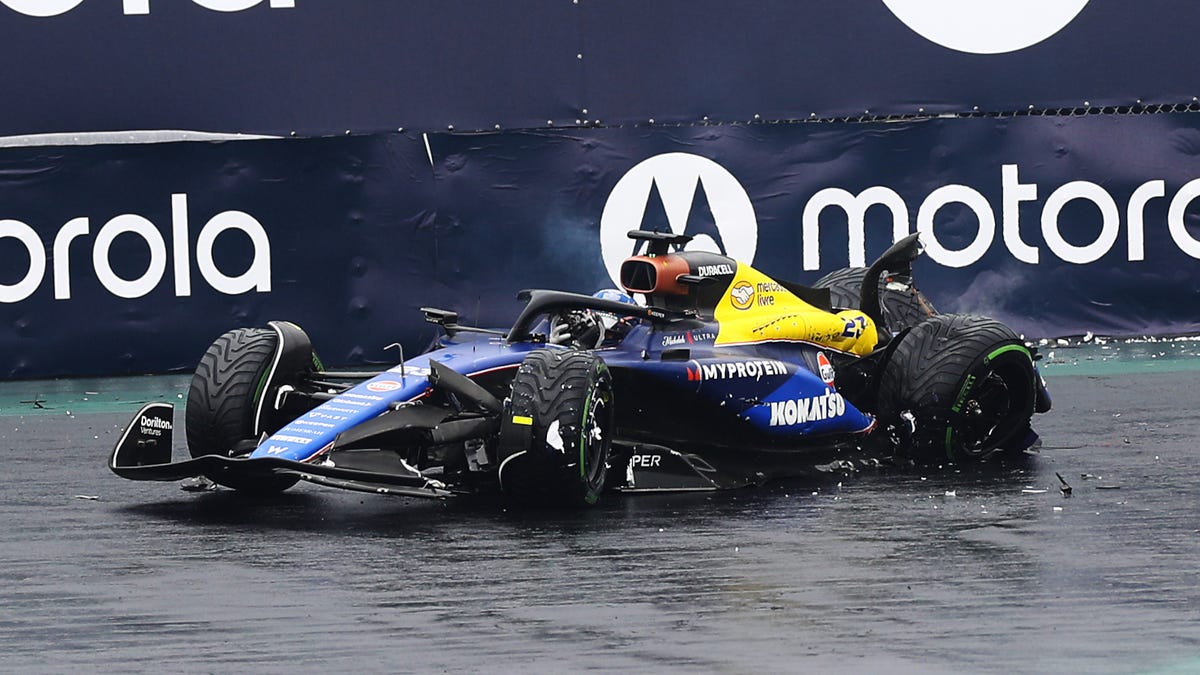Formula 1 sees highly strung athletes compete week in, week out on some of the most demanding race tracks around the world. The races aren’t always plain sailing, and the 2024 Brazilian Grand Prix was a nightmare for the Williams team with both its drivers crashing out in spectacular style. Now, the team has lifted the lid on how it repairs and rebuilds cars that are destroyed on a race weekend.
Last time F1 went racing in Brazil, the rain was pouring down on almost every session over the grand prix weekend. The challenging conditions saw Williams racer Alex Albon crash out in qualifying and fail to start the race, while teammate Franco Colapinto crashed during the race as well.
This meant that crates of smashed wings, broken brakes and other trashed pieces of Formula 1 cars were shipped from Brazil back to the Williams base in the UK for the team to try and salvage. In a new video shared by the team, the Grove-based outfit has shown the process of unpacking the two trashed racers to highlight the repairs and rebuilds that can be carried out on these priceless machines.
The process begins with crates and crates of parts arriving at the Williams base. From there, the fragments of F1 car are sorted into piles of parts that can still be used and parts that belong in the trash. Mechanics haul hastily packed fragments of carbon fiber out of a huge crate, and others hold up exhaust pipes to show the damage they sustained. From an outsider’s perspective, it looks like almost everything is destined for the trash.
That’s not the case, though, and engineers sort through the piles to uncover components that can be checked over and returned to the car. Other parts are also put to one side to be repaired before they can race in anger once again.
At this time of the season, when there are just three races remaining and teams are nearing their budget cap, it’s especially important for smaller squads like Williams to repair as many components as possible. Still, Williams fills one bin with trashed parts and an engineer calls for another to start loading with garbage.
“We’re trying to separate what can be salvageable just to help us until the end of the year,” says Rob Clayton, car assembly supervisor at the team. “That’s where we come into our own.”

While the salvaged parts are sorted, serviced and made ready for the next race, the two crashed chassis are also inspected to check that they are safe to run once again.
To do this, teams remove all the damaged components from the frame, such as suspension arms, and the crash structures are thoroughly inspected. To complete this task, Williams engineers have just three days as once it’s signed off as safe it has to be fitted with the gearbox, fuel cell and seat ready to go racing in Las Vegas.
That whole process takes the Williams team a little over a week to complete. The freight from Brazil arrives in the UK late on November 7 and departs for the U.S. the following Friday on November 14, explains Ben Howard, chief mechanic at the team.
It might seem like a monumental task, but it’s one that teams up and down the grid must complete almost every race weekend. Now, engineers will be hard at work unpacking these components once again at the garages in Vegas so the two cars are ready for Free Practice 1 at the Las Vegas Grand Prix on November 21.


